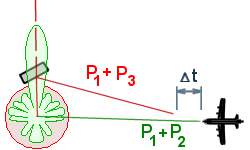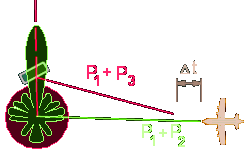Suppression of Unwanted Reflections (IISLS)


Figure 1: IISLS
SSR radars are often located in the vicinity of buildings with reflecting surfaces, in particular at airports (e.g. hangars, terminal buildings, metal boundary fences). Interrogations from the SSR may be reflected from a surface with sufficient power so that an aircraft in the reflected direction receives the interrogations and replies to them. Similarly, on the return path, the replies are reflected back to the ground receiver of the SSR. Hence, the SSR interrogator will form a false target (image) at a completely different azimuth and different range (detour) from the real aircraft.
Subsequently, when the interrogator antenna points in the direction of the real aircraft the real target will be detected as well.
Of course, the first remedy to avoid reflection is to site the SSR antenna away from reflective surfaces but this is not always possible at sites such as airports. Buildings can be made to be less reflective, including coating existing buildings with absorbent material – however this is expensive and not often practicable.
One way of reducing reflection is for the SSR interrogator to use Improved Interrogator Side Lobe Suppression (IISLS).
In IISLS the P2 and the P1 pulse are radiated from the control beam (remember: in ISLS only P2 is radiated). In this example, the real real aircraft receives the P1-P2 pair from the control directly, via the direct path. Hence the aircraft transponder suppresses (P1 = P2) and is therefore disabled from replying to any interrogations for a certain period (35 µs). Consequently, when the reflected interrogation arrives a little time later due the extra path length via the reflecting object, the transponder does not reply and so no false target is produced.
IISLS can be very effective at eliminating many reflections. But the main disadvantage of IISLS is that it causes all aircraft within range of the control beam (typically up to 40 NM) and outside of the main beam to be suppresses every interrogation, not just the ones that are in the side lobes. In some busy interrogator enviroments, this reduction of transponder availability to other interrogators is considered unacceptable.
